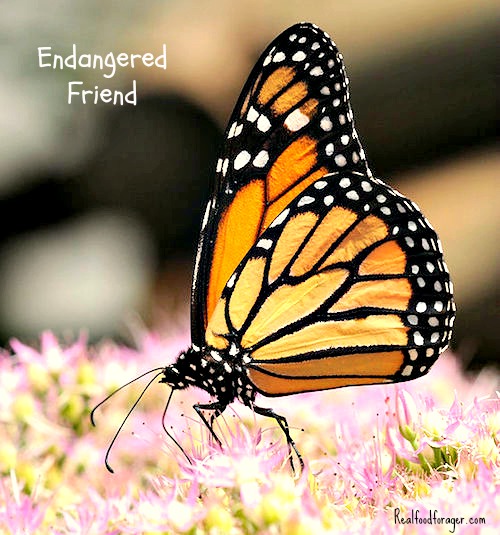As a child, can you remember how magical it was to see a monarch butterfly flitting around just out of reach? Can you remember the amazement you felt when you learned about their complex life cycle? This iconic creature is becoming endangered for several reasons — the solution has to be ours.
In the past 15 years, scientists have seen the numbers of monarchs drop dramatically. Between 1999 and 2010 there has been as much as an 81 percent decrease in numbers. The winter of 1009-2010 was a disaster for monarchs and they have been struggling since then.
In the fall, the monarch migrates en masse from the northeast and the midwest to several high altitude sites in Mexico. They shelter under the canopy of fir trees to keep warm. When the winter is over, they migrate again to the north where they lay their eggs on milkweed plants — weeds to us — but it is the only plant the monarch caterpillar can eat.
The Problems
The problems are many for the monarch.Their winter habitat among fir trees is threatened by illegal logging of these trees, making an already small habitat even smaller.
One of the most immediate threats is the disappearance of milkweed plants in this country. It has not been accidental — the disappearance has been deliberate, because farmers and gardeners alike consider the milkweed to be just that — a weed.
Farmers growing GM crops all across the midwest have been pouring glyphosate (Roundup) onto their fields to eradicate weeds, in compliment with their GM seeds. This is yet another example of the unintended consequences of genetic engineering. Glyphosate kills everything in its path and is toxic to the soil.
The milky juice of the milkweed plant, once ingested, makes the caterpillars and the adult butterflies distasteful to birds and other predators. Some butterflies such as the viceroy butterfly are not milkweed eaters but they mimic the color and patterns of the distasteful milkweed butterflies to utilize this strategy for survival.
Scientists have noticed a direst association between the killing off of milkweed and the decline of the monarch populations. Conservationists are now encouraging homeowners and gardeners to grow milkweed to support the monarch populations.
Lifespan of the Monarch
The monarch has 4 life stages: they start out as an egg, they hatch into a larvae (caterpillar), they wrap up in the cocoon and finally they metamorphose into a beautiful butterfly.
Interestingly, they go through four generations in one year: the first three generations hatch from the cocoon, but only live up to six weeks. It is the fourth generation that is able to live six to eight months in order to migrate, hibernate and then reproduce in the spring.
Butterflies are Important to Pollination
While the larvae can only eat milkweed, the butterfly will eat water, liquids from fruit and importantly, nectar. As nectar eaters they also perform the critical task of pollination.
More than 90 percent of all plants need a pollinator to distribute pollen to set fruit and seeds.
With the decimation of the honeybee population taking place due to Colony Collapse Disorder and the neonicotinoids in pesticides, we need all the alternative pollinators we can get.
While butterflies are not as efficient pollinators as bees, they can travel much longer distances than bees. Butterflies are diurnal and pollinate a wide variety of flowers that are open during the day. They have good color vision — actually sensing more color wavelengths than humans or bees including the color red.
Butterflies are perching feeders and they prefer flowers with a landing platform. They gather the pollen as they walk around flower clusters on their long, thin legs. Butterflies are beautiful and useful, but they, too are falling prey to our constant pressure on the environment.
What You Can Do
You can help in several ways:
- Plant milkweed in various spots in your garden
- Plant the flowers butterflies love to eat (see this chart)
- Avoid the use of pesticides
- Provide butterfly feeders like these
I love butterflies don’t you? I’m going to do these things in the spring in my garden. What about you? Leave a comment and let me know!













